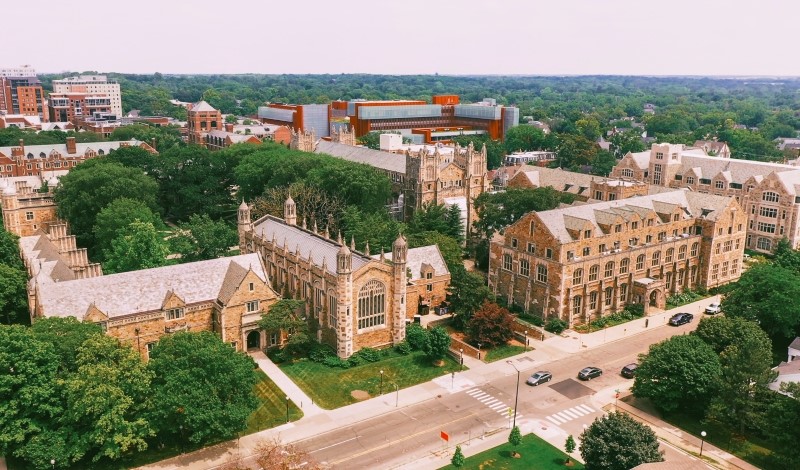
A bipartisan group of senators introduces legislation aimed at ending legacy preference in college admissions.
Nearly three quarters of Americans and the vast majority of college admissions directors opposed the use of legacy preferences in college admissions decisions, as of 2022. Since 2015, over 100 colleges and universities have even voluntarily ended such legacy preference practices in admissions.
And in November, a bipartisan coalition of senators, led by U.S. Senators Todd Young (R-Ind.) and Tim Kaine (D-Va.), introduced the Merit-based Educational Reforms and Institutional Transparency Act (MERIT Act), which, if passed, would amend the Higher Education Act of 1965 to condition schools’ accreditation on their agreement not to use legacy and donor-related preference in college and university admissions decisions.
Although the movement to end legacy admissions has been gaining traction for many years, the U.S. Supreme Court decisions in Students for Fair Admissions v. Harvard and Students for Fair Admissions v. University of North Carolina, which barred the use of race-based affirmative action policies in college admissions, spurred the movement further. After the U.S. Supreme Court decisions, President Joseph R. Biden expressed opposition to the use of legacy preferences in admissions. The U.S. Department of Education also voiced support for ending legacy and donor-relation preferences in a recent report, claiming that these practices reduce diversity, do not relate to merit or potential, serve already-privileged students, and reduce opportunities for disadvantaged students.
The drafters of the MERIT Act target legacy admissions policies through institutional accreditation, a process that is designed to ensure that education provided by institutions meets acceptable levels of quality. Although the Education Department does not directly accredit institutions, it provides oversight of third-party accrediting agencies and maintains a database of accredited institutions. To become an accredited institution under the Higher Education Act, an accrediting agency must regularly inspect, review, and report on higher education institutions’ compliance with standards relevant to providing a quality education, such as student success, curricula, faculty, facilities and student support services.
The MERIT Act, if passed, would require accrediting agencies to assess institutions’ use of admissions practices that “refrain from preferential treatment in admissions based on an applicant’s relationship to alumni of, or donors to, the institution.” For the purposes of the MERIT Act, preferential treatment means “making an admissions decision” or “awarding tangible education benefits” where an applicant’s relationship with alumni, institutional donors, or the institution itself, “serves as the determinative factor.”
Senator Kaine, one of the bill’s co-sponsors, claimed that the bill, if passed, would bring “more fairness to the higher education admissions process, and ensure that first-generation and low-income students are not put at a disadvantage because of their parents’ educational histories or incomes.” Senator Young, the other co-sponsor, lauded the bill as promoting “upward mobility for Americans of all backgrounds.”
The bill contains two caveats to the new requirements, however. First, religious schools would still reserve the right to make admissions decisions “consistent with the institution’s faith-based values,” which the bill’s proponents claim will ensure no infringement on religious freedom. Second, the new accreditation standards, if approved, should not be construed to prevent institutions from considering an applicant’s genuine interest in the institution as part of the admissions process. An applicant may demonstrate interest in an institution by drawing on their “lived experiences” and other personal attributes, so long as the criteria for assessing such interest are clearly defined and the opportunity to demonstrate interest is provided to all applicants, regardless of alumni or donor-relation status.
Although most Americans oppose legacy preferences, the practice still retains support. Critics of the movement to end legacy admissions, such as Williams College Professor Steven B. Gerrard, argue that the practice positively impacts an institution’s student body and does not harm its diversity. According to Gerrard, legacy status or relationship to donors is only considered when weighing equally qualified and equally privileged students, so a legacy student would never take the place of a first-generation student in an admitted class, for example.
In addition, Gerrard argues that allowing legacy preference can foster a tighter-knit sense of student and alumni community. This community, in turn, can boost the alumni donations needed to fund the scholarships which pay for the education of low-income or first-generation students. Indeed, one study found that, in 2022, alumni donations accounted for $13.5 billion, much of which was used to provide scholarships. Allowing legacy and donor-related preferences, therefore, may benefit low-income students even more than it benefits the admitted legacy students.
Supporters of the bill, however—including the bill’s co-sponsors—argue that allowing legacy admissions restricts opportunities for deserving, but underprivileged, students, while providing “unmerited advantage to the most connected individuals in our society.” Furthermore, under current admission practices, studies have shown that legacy students at some universities, including two Ivy League colleges, outnumber Black students at those institutions.
Ultimately, “America is a land of opportunity, not a land of aristocracy,” stated Senator Young in a recent press conference about the need for the MERIT Act. And as the Education Department noted, continuing to prefer legacy and donor-related applicants can limit vital educational opportunities for those who need it most.



